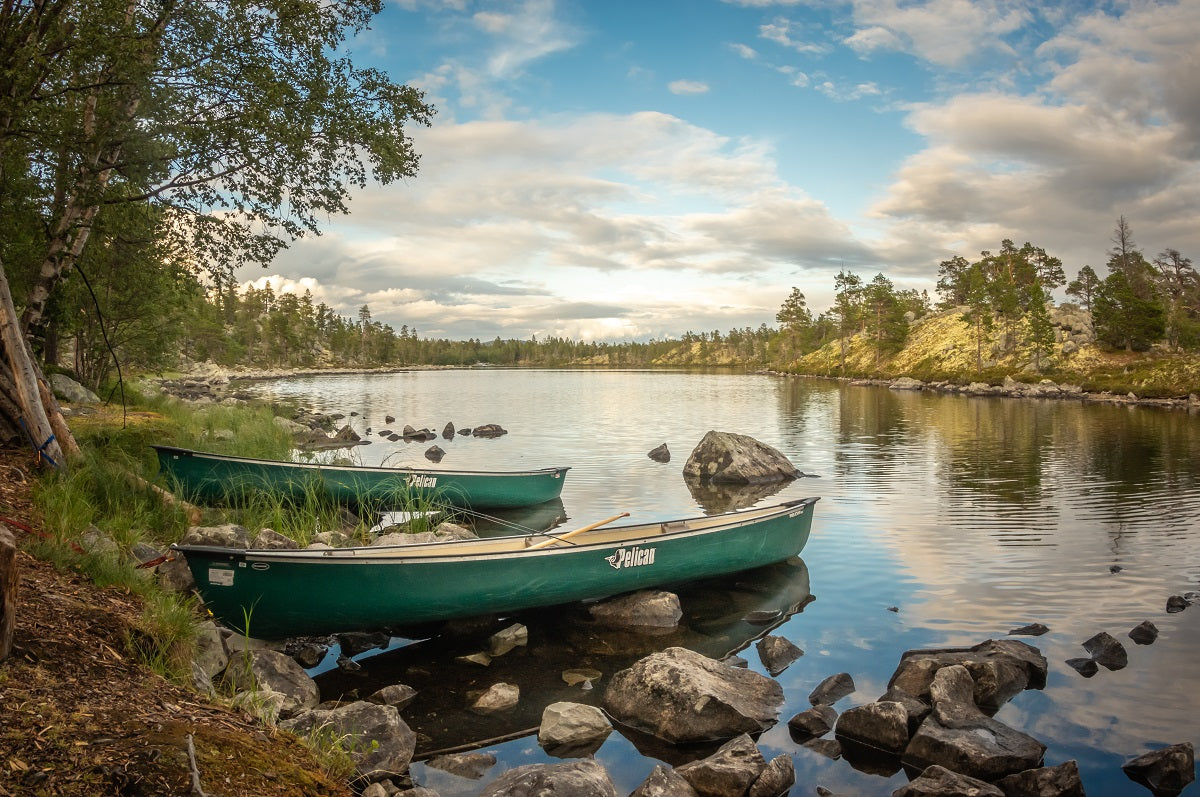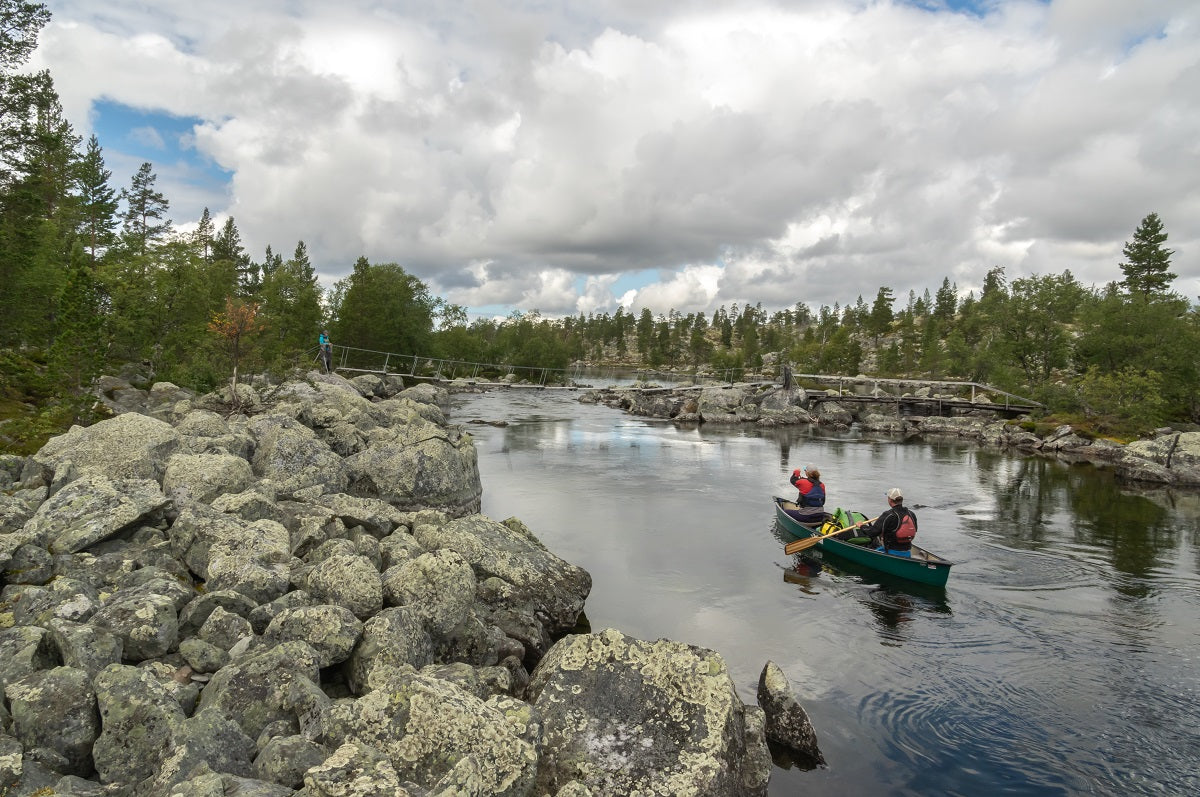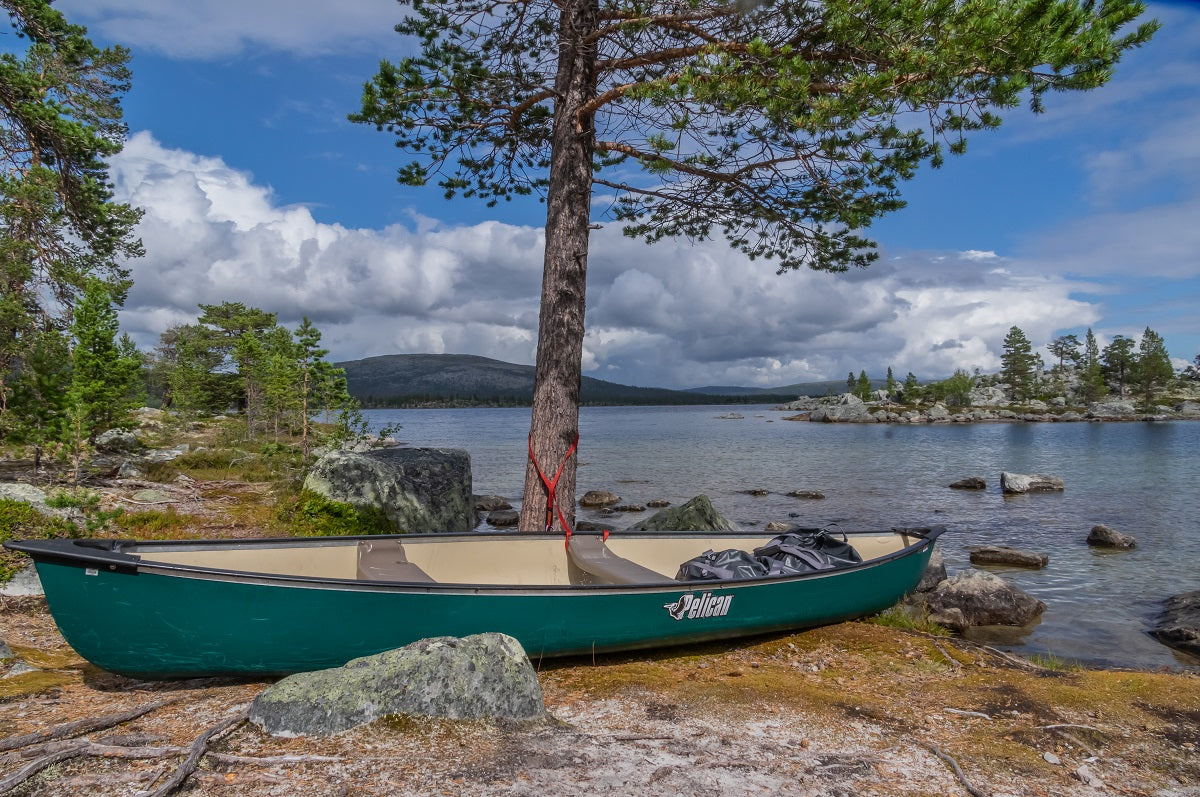We’ve been importing these boats into Manchester Canoes from Canada for several years now and selling them to customers throughout the UK via the Canoe Shops Group. They have always sold well and often fit the bill for entry level canoeists and families, looking for a budget canoe for leisurely days out.
Time for an Adventure - The Rogen River Trip
It was during the Spring of this year that plans began hatching for a few of us to drive over to Northern Sweden and complete the classic Rogen River trip. This route begins in Sweden and passes through several national parks, crossing the Norwegian border and takes a minimum of 10 days to complete. As this route is considered by many to be a world-class canoe expedition, we were all set to take our own expedition style canoes which would be well suited (on paper) to take on the variety of conditions we would find whilst crossing the Tundra- white water rapids, long portages and vast, open lake crossings.
As it turned out, with time constraints we were forced into flying out, and renting canoes from a local outfitter. The only canoes available as luck would have it, were the Pelican 15.5’s. After the initial disappointment subsided that we would be made to paddle ‘entry level’ canoes, and of course the many reservations as to whether they would be up to surviving the challenge and rigours of such a trip. But beggars can’t be choosers, so looked on it as an opportunity to give them a try, put them through their paces and give them a thorough Canoe Shops style demo!

After months of planning, and a last minute super-market sweep before the only supermarket closed in Funasdalen, we presented ourselves to the hire shop and were swiftly shuttled down to a car park in the middle of nowhere with our hire Pelican’s, maps, equipment and all the food and alcohol to sustain us for the next 10 days out in the wilderness.

With the waters edge not even in sight, our first chore was to portage (carry) our canoe and all our kit from the car park to the water’s edge. An hour later we had ferried the boats and equipment and took our first paddle strokes of many, with 100 kms of paddling and portaging still ahead of us.
Our first thoughts were how well these boats tracked in a straight line and how stable they were, even with 2 adults and ten days worth of food, drink, camping and fishing equipment in each Pelican. One of the initial concerns was over the plastic style bench seats with a central supporting pillar on their underside. Some of us like to paddle canoes in the traditional kneeling position, finding it suits our paddling style and provides good back support on long days out. No need to worry, the Pelicans could easily accommodate even my long legs, and were simple to paddle either kneeling up, or perched in the sitting position. The plastic seats probably aren’t as comfortable as a wood-web seat, but are virtually maintenance free and have a much longer life expectancy than varnished or oiled wood.

We won’t bore the reader with the full trip report of the 10 days spent out in the wilds. But will write a bit about what impressed us about the Pelican 15.5, and why after having actually paddled them our opinions changed somewhat. Apart from being stable and easy to paddle, the Pelican was relatively light in comparison to heavier canoes constructed from triple layer plastics. This made the numerous portages with a canoe on our shoulders less painful, including that one gruelling 5km’s between two lake systems. In everyday use, this would also be a great asset when loading onto a car roofrack or carrying the canoe around canal locks etc.


Another concern for all of us was the boats durability; the last thing we wanted was to be stuck in the wilderness with a hole in one of our boats and have to call in rescue. It is generally considered that single layer plastic canoes (such as the Pelican) are less durable than triple layer canoes. During the trip, we did end up dragging the Pelicans over numerous granite boulders, lowering them down scree slopes, running aground in shallow waters and also running plenty of shallow grade 2-3 rapids. (Not what they are designed for!) The rental Pelicans we were using had also seen around 3 months hard use before we laid our hands on them. We were all pleasantly surprised as to how well they both survived the knocks we gave them during our trip, and were surprised as to why a rental operator would chose the Pelicans for their hire fleet. Upon returning we’ve done some research into the plastic material that Pelican use when making this boat. It is actually a multi-layer plastic (rather than single layer) called Ram-X, which has high impact resistance and a UV protected exterior finish.


Although we were impressed by the strength, lightness and durability of the plastic, it was nowhere near as stiff as a triple-layer plastic or composite canoe. Meaning we could feel the boats flex when getting into them and whilst paddling out on the water. This would lead to some loss of performance, but does bring the overall manufacturing costs down and provides a good quality product at less cost to the customer.

Overall Impressions
What a fantastic canoe for the money, being strong, light and really stable (even in light winds and small chop). The Pelican can be paddled easily be solo, tandem or as a small family. It also has enough carrying capacity for loads of camping equipment and supplies for overnight trips. Granted it doesn’t have the same performance as boats that cost more, and we wouldn’t recommended it for paddlers taking on white-water and rapids due to its lack of rocker and hull shape. But for the majority of recreational paddlers the Pelican 15.5 will probably tick all the boxes, and from our own experience perhaps shouldn’t be written off on first impressions!

